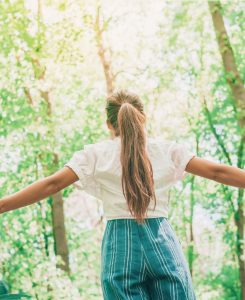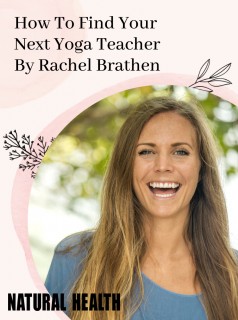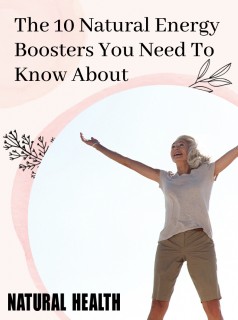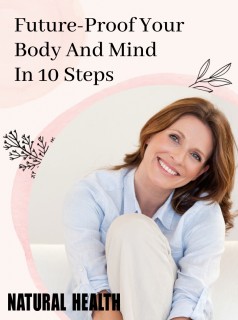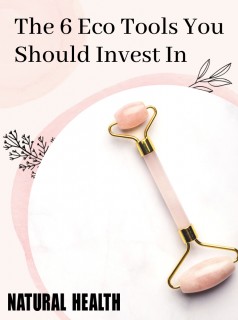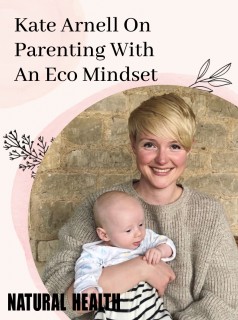We know that yoga is great for improving posture and flexibility, but can it also help in the fight against ageing? Lucia Cockcroft finds out.
We know that yoga is great for improving posture and flexibility , but can it also help in the fight against ageing? Lucia Cockcroft finds out.yoga in the West is now such that almost every gym and health club in the land offers classes. Yet there is still a widespread misconception that yoga is a practice for young, flexible women.
In reality, yoga is for everyone, regardless of age, fitness, flexibility or background; perhaps it comes as a surprise to hear that the older you are, the more you have to gain. Put simply, yoga is the single most effective all-round preventative medicine available.
The physical benefits to be gained from a regular yoga practice include: improved balance and strength, lower blood pressure, better posture, stronger bones, more flexible joints and improved cardiovascular health. On a psychological level, the rewards include a heightened ability to deal with stress, better focus, more self-awareness and a calmer mind.
Most of us realise that, regardless of our age, keeping healthy means devoting time to physical exercise. Swimming and walking are fabulous ways to maintain cardiovascular health, but neither will help maintain bone density in the same way that yoga or weight training will.
London-based yoga and pilates teacher Sally Parkes says that, while yoga is ultimately aspiritual practice, it can have an amazinganti-ageing effect on the physical body.
She says: “The asanas, or physical postures, work to keep the joints of the body supple and mobile whilst improving and maintainingtheir strength and resilience to impact and strain. This includes the spine, the health of which is massively important to combat premature ageing. If we let gravity take over instead of standing up tall, the spine becomes rounded. This postural defect is hugely ageing as the internal organs are put under strain and we cannot take full, deep breaths. The result is a stressed and tired body; all of which has a negative effect on our mental and physical self.”
Some loss of muscle tone and density is inevitable as we get older – yet, with effort and practice, some of this process can be prevented or slowed down. Putting on weight is often presented as another unwelcome side-effect of ageing – yet, again, with care and attention, piling on extra pounds can be avoided.
Sally explains: ” As we age, we need fewer calories to maintain our weight. The calories that aren’t used then turn to fat, hence the vast majority of the population become overweight as they age. Hatha yoga works to keep our metabolism in check by maintaining a healthy muscle-to-fat ratio and by burning calories as we work through the postures.”
Laura Gilmore, director of Bristol City Yoga, puts it this way: “Yoga helps our body and mind work better. Regular yoga improves posture, aids digestion, releases stress and tension, boosts the immune system, tones and strengthens muscles, helps with weight loss andimproves heart function. These myriad benefits contribute to leading longer, happier and calmer lives.”
Laura also emphasises the importance of breathing consciously, and with awareness – leading to lower stress levels and improvedsleep. In turn, this helps to lower and stabilise blood pressure.
She adds: “Maintaining or improving joint and muscle flexibility through regular use of the body can keep you younger for longer. Yoga specifically helps with common sites of pain: in the back, knee, shoulders and neck, as well as with headaches.”
Over and above the transformative physical benefits, yoga’s over-arching aim is to calm and focus the mind –helping us to feel more balanced, centred and, ultimately, more content.
In stark contrast to the West’s rather negative attitudes towards ageing, in yoga philosophy, an older person is assumed to be naturally moving towards a state of higher spiritual awareness, no longer weighed down by the cares of the world.
Tara Fraser, author of eight books on yoga and founder of London’s Yoga Junction says: “This concept of ageing being something to look forward to is really inspirational. And the idea of people moving into a more spiritually aware phase of their lives puts a refreshing new spin on the idea of the elderly as lonely.”
In the words of 80-something Iyengar yoga founder, BKS Iyengar, who still keeps up a vigorous daily practice: “Yoga transforms a egative approach to life into a positive one. It helps us take care of ourselves at a time of need. Daily practice of yoga will keep old age at bay.”
Case study
Nichole Thomas, 69, is a yoga teacher and mother
“Yoga has helped me maintain flexibility and strength in my body. It also gives me a feeling of lightness and wellbeing – but most importantly a general sense of security and inner strength. On a physical level, yoga has helped with some hip pain, and long-termrelief of sciatica. Balance is always a tricky aspect of asana for me, so focusing on standing postures has helped a lot too. Many people I know over the age of 50 are actually fitter and healthier than they were 20 years ago, simply through the practice of a regular yoga routine and a more balanced lifestyle. It is important not to fight ageing – it is a beautiful process and observing how you have developed over time, both physically and mentally, can be enlightening.”
Downward Facing Dog
This pose combines the benefits of inverting with bending forward and is accessible to most people of any age, early in their practice. This asana strengthens the hands, arms, wrists and shoulders. Since it is weight-bearing, it helps to prevent osteoporosis and also strengthens the spine and abdominals. Down dog can be modified, with the student placing their hands on a chair, rather than on the floor.
Tree Pose
Another classic yoga asana, tree pose helps improve balance, leg strength and bone density. As most people’s balance deteriorates with age, it is an especially important pose to do regularly and can be modified, if necessary, by the student holding onto a wall or chair.
Cobra
Back bends are especially important to practise for older people, as they naturally counter a tendency towards poor posture, with shouldersslumping forwards and the chest concaving. The pose helps open the heart and chest, and encourages the shoulders to fall away from the ears. This backbend can be kept very low. Use the hands under the shoulders as a guide.
Article by
Lucia Cockcroft
Editor
Lucia Cockcroft is the editor of online magazine Yoga Abode and co-founder of retreat company YA Retreats (ya-retreats.co.uk) which runs regular yoga and wellbeing retreats, with daily classes specifically geared...
Discover more
Article by
Lucia Cockcroft
Editor
Lucia Cockcroft is the editor of online magazine Yoga Abode and co-founder of retreat company YA Retreats (ya-retreats.co.uk) which runs regular yoga and wellbeing retreats, with daily classes specifically geared...
Discover more



